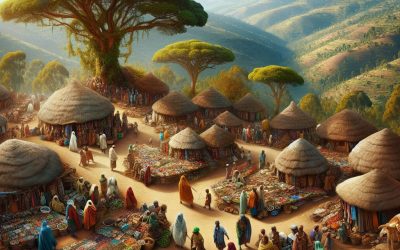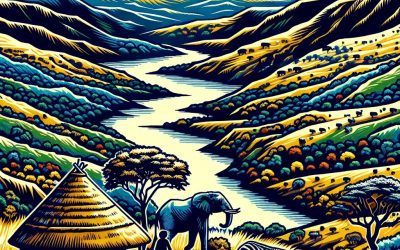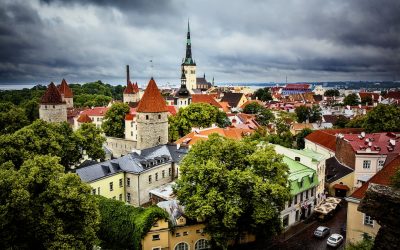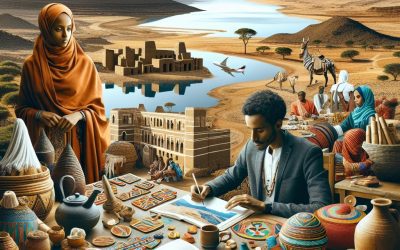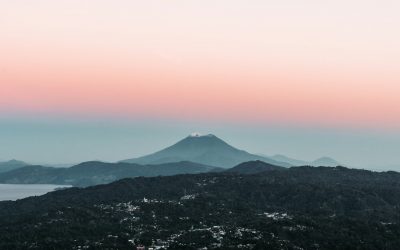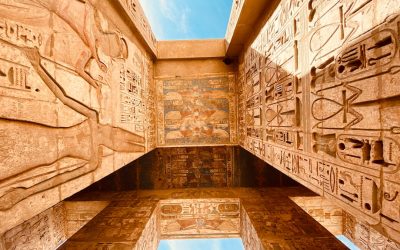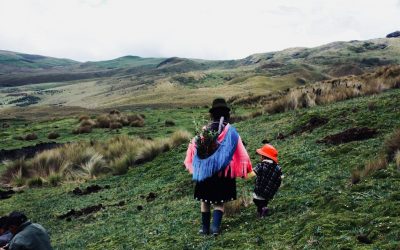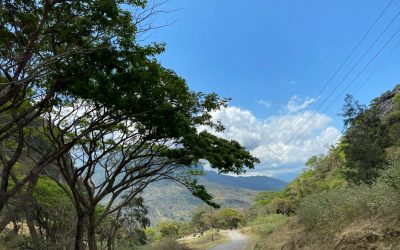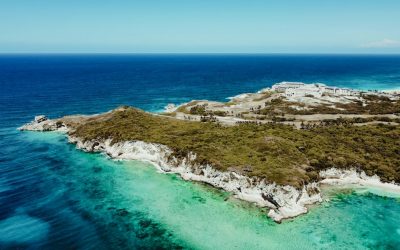World Geography
Geography is the study of the Earth’s landscapes, environments, and the relationships between people and their surroundings. It encompasses both the physical aspects of the Earth, such as its landforms, bodies of water, and climate, as well as the human aspects, including population distribution, cultures, and economies. World geography is a broad field that seeks to understand the complexities of our planet and how humans interact with it. By studying world geography, we can gain a deeper appreciation for the diversity of our planet and the interconnectedness of its various regions.
Geography is a multidisciplinary field that draws on elements of physical science, social science, and humanities. It involves the use of maps, spatial analysis, and geographic information systems (GIS) to understand the Earth’s surface and the processes that shape it. World geography also encompasses the study of human geography, which examines the ways in which people and their activities are distributed across the Earth. By understanding world geography, we can better appreciate the environmental, cultural, and economic challenges facing different regions of the world. This knowledge is crucial for addressing global issues such as climate change, resource management, and international development.
The Five Oceans and Seven Continents
The Earth’s surface is divided into five major oceans: the Pacific, Atlantic, Indian, Southern (or Antarctic), and Arctic Oceans. These vast bodies of water play a crucial role in regulating the Earth’s climate and supporting diverse marine ecosystems. The oceans also serve as important transportation routes and a source of food and other natural resources for human societies around the world.
In addition to the oceans, the Earth’s landmasses are divided into seven continents: Africa, Antarctica, Asia, Europe, North America, Australia (or Oceania), and South America. Each continent has its own unique physical and cultural characteristics, shaped by millions of years of geological processes and human history. From the deserts of Africa to the rainforests of South America, the continents offer a rich tapestry of landscapes and environments for exploration and study.
Major Mountain Ranges and Deserts
The Earth’s surface is also marked by major mountain ranges and deserts that have shaped the planet’s physical and cultural landscapes. The Himalayas, for example, are the highest mountain range in the world and are home to diverse ecosystems and cultures in countries such as India, Nepal, and Bhutan. The Andes in South America, the Rockies in North America, and the Alps in Europe are other prominent mountain ranges that have influenced human settlement patterns and economic activities.
Deserts cover about one-third of the Earth’s land surface and are characterized by low precipitation and extreme temperatures. The Sahara Desert in Africa is the largest hot desert in the world, while the Gobi Desert in Asia is one of the largest cold deserts. Deserts are not only home to unique flora and fauna but have also been important trade routes and cultural crossroads throughout history.
Climate Zones and Biomes
The Earth’s climate is influenced by a variety of factors, including latitude, altitude, ocean currents, and prevailing winds. As a result, the planet is divided into different climate zones, each with its own characteristic weather patterns and ecosystems. The equator, for example, experiences a tropical climate with high temperatures and heavy rainfall, while the polar regions have a cold and dry climate.
These climate zones give rise to different biomes, or large ecological areas characterized by distinct plant and animal communities. The tropical rainforest biome, found near the equator, is home to a diverse array of species and is vital for regulating the Earth’s climate. The grasslands biome, found in regions such as the African savannah and North American prairies, supports grazing animals and has been important for human agriculture throughout history.
Human Geography and Population Distribution
Human geography examines the ways in which people and their activities are distributed across the Earth’s surface. It encompasses topics such as population growth, migration patterns, urbanization, and cultural diversity. Understanding human geography is crucial for addressing global challenges such as poverty, inequality, and environmental degradation.
Population distribution is uneven across the world, with some regions experiencing rapid population growth while others are declining. The majority of the world’s population lives in Asia, particularly in countries such as China and India. Urban areas are also growing rapidly, with more than half of the world’s population now living in cities. This trend has significant implications for infrastructure development, resource management, and social inequality.
Historical and Cultural Geography
Historical geography examines how human activities have shaped the Earth’s landscapes over time. It explores topics such as colonialism, trade routes, and the rise and fall of empires. Cultural geography focuses on how human cultures have developed in different regions of the world and how they interact with their environments.
The Silk Road, for example, was an ancient trade route that connected China with Europe and facilitated the exchange of goods, ideas, and technologies across Eurasia. This historical trade route had a profound impact on the development of cultures and economies along its path. Similarly, cultural geographers study how different societies have adapted to their environments through practices such as agriculture, architecture, and religious beliefs.
The Importance of Geographic Knowledge
Geographic knowledge is crucial for addressing global challenges such as climate change, resource management, and international development. By understanding world geography, we can better appreciate the environmental, cultural, and economic challenges facing different regions of the world. This knowledge is crucial for addressing global issues such as climate change, resource management, and international development.
Geographic knowledge also helps us to understand our interconnectedness with other regions of the world. By studying world geography, we can gain a deeper appreciation for the diversity of our planet and the interconnectedness of its various regions. This understanding can foster a sense of global citizenship and empathy for people from different cultures and backgrounds.
In conclusion, world geography is a complex and multifaceted field that encompasses both physical and human aspects of the Earth’s landscapes. By studying world geography, we can gain a deeper appreciation for the diversity of our planet and the interconnectedness of its various regions. This knowledge is crucial for addressing global challenges such as climate change, resource management, and international development. It also helps us to understand our interconnectedness with other regions of the world and fosters a sense of global citizenship.
FAQs
What is world geography?
World geography is the study of the Earth’s landscapes, environments, and the relationships between people and their environments. It encompasses the physical features of the Earth, as well as the human activity that takes place on it.
Why is world geography important?
World geography is important because it helps us understand the world around us. It provides insights into the physical and human processes that shape our planet, and helps us make informed decisions about how to interact with our environment.
What are the main branches of world geography?
The main branches of world geography include physical geography, which focuses on the Earth’s natural features and processes, and human geography, which examines the relationships between people and their environments.
How does world geography impact our daily lives?
World geography impacts our daily lives in numerous ways, from influencing the weather and climate we experience, to shaping the availability of natural resources and influencing the distribution of populations and cultures around the world.
What are some key concepts in world geography?
Key concepts in world geography include location, place, human-environment interaction, movement, and region. These concepts help geographers understand and interpret the world around them.
Discovering the Hidden Gems of Fiji: A Journey Through the Paradise Islands
Fiji, located in the South Pacific Ocean, is an archipelago made up of 333 islands. It is known for its stunning natural beauty, pristine beaches, and vibrant culture. The country is situated east of Australia and north of New Zealand, making it a popular destination for travelers seeking a tropical paradise. Fiji’s geography is diverse, with lush rainforests, towering mountains, and crystal-clear waters. The islands are surrounded by coral reefs, which are home to a rich variety of marine life. The culture of Fiji is deeply rooted in tradition and hospitality, with the locals known for their warm and welcoming nature. Fiji has gained a reputation as a tropical paradise, attracting tourists from all over the world. The islands offer a range of activities and attractions, from relaxing on white sandy beaches to exploring vibrant coral reefs. Whether you’re looking for adventure or relaxation, Fiji has something to offer everyone. Summary Fiji is an archipelago of natural wonders, with hidden gems waiting to be discovered. Divers will find paradise exploring Fiji’s coral reefs, while beach lovers can escape to secluded shores. Traditional Fijian villages offer a cultural journey, while hiking trails take you through the wilderness. Fiji’s magnificent waterfalls are a natural wonder, and thrill-seekers can find adventure activities. Don’t miss out on the delicious cuisine of Fiji, and plan your trip according to the best time to visit. The Top Hidden Gems of Fiji: Uncovering the Untouched Beauty While Fiji is well-known for its popular tourist destinations such as Nadi and Denarau Island, there are also many hidden gems waiting to be discovered. These lesser-known destinations offer a...
Exploring the Rich Culture and History of Ethiopia: A Journey Through the Land of Origins
Ethiopia, located in the Horn of Africa, is a country with a rich and diverse history and culture. It is one of the oldest countries in the world, with evidence of human habitation dating back thousands of years. From ancient civilizations to powerful empires, Ethiopia has a fascinating past that has shaped its present-day culture. This article will explore the origins of Ethiopia, its cultural diversity, ancient kingdoms, the Ethiopian Orthodox Church, cuisine, natural wonders, music and dance, the coffee ceremony, art and craftsmanship, and its contemporary culture. Summary Ethiopia has a long and complex history, with evidence of human habitation dating back over 3 million years. Ethiopia is home to a diverse range of cultures and traditions, with over 80 different ethnic groups living within its borders. The ancient kingdoms of Ethiopia, including Aksum and Lalibela, are renowned for their impressive architecture and religious significance. The Ethiopian Orthodox Church is a major influence on Ethiopian culture, with its unique blend of Christianity and traditional beliefs. Ethiopian cuisine is known for its bold flavours and use of spices, with dishes like injera and doro wat being popular both in Ethiopia and around the world. The Origins of Ethiopia: A Brief History Ethiopia has a long and storied history that dates back to ancient times. The earliest known civilizations in Ethiopia were the D’mt and Aksumite kingdoms, which thrived from around 800 BCE to 700 CE. The Aksumite Empire was one of the most powerful in the ancient world, controlling trade routes and establishing a vast empire that stretched from present-day Sudan to Yemen. However, the Aksumite Empire eventually declined...
Exploring the Kingdom of Eswatini: A Journey Through the Heart of Southern Africa
The Kingdom of Eswatini, formerly known as Swaziland, is a small landlocked country located in Southern Africa. It is bordered by South Africa to the west and Mozambique to the east. Despite its size, Eswatini is a country rich in history, culture, and natural beauty, making it a must-visit destination for travelers. Eswatini has a fascinating history that dates back thousands of years. The country was ruled by various clans and chiefs before it became a British protectorate in the late 19th century. In 1968, Eswatini gained independence from British rule and became a monarchy. Today, it is one of the few remaining absolute monarchies in the world. The culture of Eswatini is deeply rooted in tradition and customs. The Swazi people, who make up the majority of the population, have a rich cultural heritage that is celebrated through music, dance, and attire. Traditional dances such as the Sibhaca and Umhlanga are performed at festivals and special occasions, showcasing the vibrant spirit of the Swazi people. Summary Eswatini is a small, landlocked kingdom in southern Africa. The country has a rich cultural heritage, with traditional dances, music, and crafts. Eswatini is home to stunning natural wonders, including mountains, waterfalls, and wildlife reserves. Visitors can see a variety of animals in Eswatini’s national parks, including elephants, lions, and rhinos. The country has many traditional festivals and celebrations throughout the year, showcasing its unique culture and history. The Rich Cultural Heritage of Eswatini One of the highlights of visiting Eswatini is experiencing its rich cultural heritage. Traditional dances and music play a significant role in Swazi culture, and visitors have the...
Exploring the Charm and Innovation of Estonia: A Journey Through the Land of the Tallinn
Nestled in Northern Europe, Estonia is a small but vibrant country with a population of just over 1.3 million people. Despite its size, Estonia has made a name for itself on the global stage with its unique culture, rich history, and commitment to innovation. Located on the eastern coast of the Baltic Sea, Estonia shares borders with Russia to the east and Latvia to the south. Its capital city, Tallinn, is a medieval gem that attracts visitors from all over the world. Estonia has a fascinating history that dates back thousands of years. It has been influenced by various cultures and empires throughout the centuries, including the Vikings, Germans, Swedes, and Russians. Despite periods of occupation and struggle for independence, Estonia has managed to maintain its cultural identity and traditions. Today, Estonia is known for its forward-thinking approach to technology and sustainability, making it a unique and exciting destination for travellers. Summary Estonia is a small nation with a big heart, known for its rich cultural heritage and natural wonders. Tallinn is a medieval city with modern twists, offering a unique blend of old and new. Estonia’s cultural heritage ranges from folk traditions to contemporary art, showcasing the country’s diverse artistic scene. Estonia’s natural wonders include pristine forests and stunning coastline, making it a perfect destination for nature lovers. Estonia’s tech-savvy revolution has made it a leader in innovation, with a focus on sustainability, wellness, and community. Discovering the allure of Tallinn: A medieval city with modern twists Tallinn, the capital city of Estonia, is a true gem that seamlessly blends medieval charm with modern attractions. The heart...
Exploring the Enchanting Charm of Eritrea: A Journey Through the Hidden Gem of Africa
Eritrea, a small country located in the Horn of Africa, is often overlooked as a travel destination. However, those who do venture to this hidden gem are rewarded with a truly unique and unforgettable experience. From its rich cultural heritage to its stunning natural beauty, Eritrea has something to offer every type of traveler. Summary Eritrea is Africa’s best kept secret, with a rich cultural heritage and natural beauty. As a melting pot of diversity, Eritrea boasts a thriving arts and crafts scene and delicious cuisine. The magnificent architecture of Asmara is a timeless treasure, while the warm hospitality of the Eritrean people is a genuine welcome. Eritrea’s fascinating history tells a story of resilience and independence, making it a promising destination for sustainable tourism. Adventurous activities in Eritrea make it a playground for explorers, with a future that looks bright for visitors seeking a unique experience. The Rich Cultural Heritage of Eritrea: A Melting Pot of Diversity Eritrea is home to a diverse range of ethnic groups, each with their own unique traditions and languages. The Tigrinya, Tigre, and Afar are just a few of the many ethnic groups that call Eritrea home. This diversity is reflected in the country’s music, dance, and clothing. Traditional Eritrean music is characterized by its rhythmic beats and melodic tunes, often accompanied by traditional instruments such as the krar and the wata. Eritrean dance is vibrant and energetic, with dancers often wearing colorful costumes adorned with intricate beadwork and embroidery. Religion also plays a significant role in Eritrean culture, with Christianity and Islam being the two dominant religions. Churches and mosques...
Exploring the Hidden Gems of Equatorial Guinea: A Journey Through Africa’s Tropical Paradise
Equatorial Guinea, a small country located on the west coast of Central Africa, is often referred to as Africa’s best kept secret. With its stunning beaches, natural wonders, rich cultural heritage, and fascinating history, Equatorial Guinea offers a unique and unforgettable travel experience. Despite its relatively unknown status, the country has much to offer to adventurous travelers seeking to explore off-the-beaten-path destinations. Equatorial Guinea is made up of two main regions: the mainland region known as Rio Muni and the island region consisting of Bioko Island and the smaller islands of Annobón and Corisco. The country is known for its diverse landscapes, ranging from pristine beaches and lush rainforests to volcanic mountains and savannahs. This diversity makes it a paradise for nature lovers and adventure seekers. Summary Equatorial Guinea is Africa’s best kept secret, with stunning beaches, rich cultural heritage, fascinating history, vibrant capital city, delicious cuisine, friendly locals, untamed jungles, and luxury resorts and spas. Equatorial Guinea’s stunning beaches and natural wonders are a must-see, with crystal-clear waters, white sand beaches, and diverse marine life. The rich cultural heritage of Equatorial Guinea is evident in its music, dance, art, and traditional customs, which are celebrated throughout the country. Delving into the fascinating history of Equatorial Guinea reveals a complex past, from colonialism to independence, and the challenges faced by the country today. Malabo, the vibrant capital city of Equatorial Guinea, is a bustling hub of activity, with colourful markets, lively nightlife, and stunning architecture. Discovering Equatorial Guinea’s Stunning Beaches and Natural Wonders Equatorial Guinea boasts some of the most beautiful beaches in Africa. The country’s coastline stretches for...
Discovering the Hidden Gems of El Salvador: A Journey Through Central America’s Best-Kept Secret
El Salvador, a small country in Central America, is often overlooked as a travel destination. However, this hidden gem has so much to offer to adventurous travelers. From its rich cultural heritage to its stunning natural wonders, El Salvador has something for everyone. In this article, we will uncover the beauty and charm of this often underrated country and explore why it should be on your travel bucket list. Summary El Salvador is a hidden gem in Central America with rich cultural heritage and natural wonders to explore. The country’s cuisine is unique and delicious, with plenty of local flavours to sample. There are many great places to stay in El Salvador, from beachfront resorts to eco-friendly lodges. Adventure tourism is a big draw, with thrilling activities like surfing, hiking, and zip-lining on offer. Sustainable tourism is important in El Salvador, and visitors can support local communities by choosing responsible travel options. Uncovering the Rich Cultural Heritage of El Salvador El Salvador is a country with a deep and diverse cultural heritage. The influence of indigenous cultures can be seen in its traditions and customs. The indigenous people of El Salvador, such as the Pipil and Lenca, have left their mark on the country’s art, music, and language. Visitors can immerse themselves in the vibrant indigenous culture by visiting local markets, attending traditional ceremonies, and exploring archaeological sites. The impact of Spanish colonization is also evident in El Salvador’s culture. The Spanish brought their language, religion, and architecture to the country, which still have a significant influence today. Spanish colonial buildings can be found throughout the country, particularly in...
Uncovering the Mysteries of Ancient Egypt: A Journey Through Time
Ancient Egypt is a civilization that has captivated the world for centuries. With its rich history, unique culture, and incredible achievements, studying ancient Egypt provides us with a glimpse into a world that existed thousands of years ago. From the rise of the pharaohs to the construction of the great pyramids, from the art and architecture to the mysterious hieroglyphics, ancient Egypt offers a wealth of knowledge and fascination. Studying ancient Egypt is important for several reasons. Firstly, it allows us to understand the origins of one of the world’s oldest civilizations and how it shaped the development of human society. Secondly, it provides insights into the political, social, and religious structures of ancient Egypt, giving us a deeper understanding of their way of life. Lastly, studying ancient Egypt helps us appreciate the incredible achievements and advancements made by this civilization, such as their architectural marvels and advancements in medicine and mathematics. Summary Ancient Egypt was a fascinating civilization with a rich history and culture. The early dynasties saw the rise of the pharaohs and the establishment of a centralized government. The construction of the Great Pyramids remains a mystery, but they were likely built as tombs for pharaohs. The art and architecture of ancient Egypt provide valuable insights into their daily life and beliefs. Hieroglyphics were the written language of ancient Egypt and have been deciphered to reveal their history and culture. The Rise of the Pharaohs: A Look at the Early Dynasties The early dynasties of ancient Egypt marked the rise of the pharaohs and the establishment of a centralized government. The first dynasty, which began around...
Exploring the Breathtaking Beauty of Ecuador: A Journey Through South America’s Hidden Gem
Ecuador, a small country located on the western coast of South America, is a hidden gem for travelers seeking diverse natural wonders. Despite its size, Ecuador boasts an incredible array of landscapes, from the pristine Galapagos Islands to the majestic peaks of the Andes Mountains and the lush Amazon Rainforest. In addition to its natural beauty, Ecuador is also rich in cultural heritage, with vibrant indigenous communities and charming colonial cities. Whether you’re an adventure seeker, a nature lover, or a history enthusiast, Ecuador has something to offer for everyone. Summary Ecuador boasts natural wonders such as the Galapagos Islands, Andes Mountains, Amazon Rainforest, coastline, and more. The Galapagos Islands offer a unique and pristine ecosystem with diverse wildlife. The Andes Mountains showcase majestic peaks and vibrant culture. The Amazon Rainforest provides a thrilling adventure into the wild. Ecuador’s cities, such as Quito, Cuenca, Otavalo, and Baños, offer a mix of history, art, adventure, and indigenous culture. The Galapagos Islands: A Unique and Pristine Ecosystem One of Ecuador’s most famous natural attractions is the Galapagos Islands, a group of volcanic islands located in the Pacific Ocean. The islands are renowned for their unique and diverse wildlife, which inspired Charles Darwin’s theory of evolution. Visitors to the Galapagos can witness up-close encounters with giant tortoises, marine iguanas, blue-footed boobies, and many other species found nowhere else on earth. In addition to wildlife spotting, there are plenty of activities and attractions to enjoy on the islands. Snorkeling and diving are popular activities, allowing visitors to explore the vibrant underwater world teeming with marine life. Hiking trails offer breathtaking views of volcanic...
Exploring the Hidden Gems of East Timor: A Journey Through the Culture and Beauty of Timor-Leste
East Timor, officially known as the Democratic Republic of Timor-Leste, is a small island nation located in Southeast Asia. Despite its size, East Timor is a hidden gem that is worth exploring for its rich history, diverse culture, natural wonders, delicious cuisine, warm and welcoming people, traditional arts and crafts, adventure activities, and commitment to sustainable tourism. East Timor has a fascinating history and unique geography. It was colonized by the Portuguese in the 16th century and later occupied by Indonesia for over two decades. The country gained its independence in 2002 and has since been working towards building a stable and prosperous nation. East Timor is located on the eastern half of the island of Timor, with Indonesia occupying the western half. The country also includes the islands of Atauro and Jaco. There are several reasons why East Timor is worth visiting. Firstly, it offers a unique blend of cultures and traditions. The Timorese culture is influenced by both Portuguese and Indonesian cultures, resulting in a vibrant and diverse society. Secondly, East Timor is home to stunning natural attractions, including mountains, beaches, and marine life. Whether you enjoy hiking through lush forests or diving in crystal-clear waters, East Timor has something for everyone. Lastly, the people of East Timor are known for their warm hospitality and friendliness, making visitors feel welcome and at home. Summary East Timor is a hidden gem worth exploring for its rich culture, natural wonders, history, cuisine, people, arts and crafts, and adventure opportunities. Timor-Leste’s culture is a blend of traditions, reflecting its diverse history and influences from Portugal, Indonesia, and other neighbouring countries....
The Maastricht Treaties: The Birth of the European Union
Capital: Brussels Population (Estimated July 2012): 503,824,373 Area: 4,324,782km2 or 1,669,808mi2 Currency: Euro (€) Official Language: Bulgarian, Czech, Danish, Dutch, English, Estonian, Finnish, French, Gaelic, German, Greek, Hungarian, Italian, Latvian, Lithuanian, Maltese, Polish, Portuguese, Romanian, Slovak, Slovene, Spanish, Swedish Political Information: Official Religion: No Official Religion (Predominantly Christian, Muslim and Jewish population) Highest Mountain: Mont Blanc at 4,807m 15,770ft Largest River: Divisions: 26 countries: Austria, Belgium, Bulgaria, Cyprus, Czech Republic, Denmark, Estonia, Finland, France, Germany, Greece, Hungary, Ireland, Italy, Latvia, Lithuania, Luxembourg, Malta, Netherlands, Poland, Portugal, Romania, Slovakia, Slovenia, Spain, Sweden Introduction The Maastricht Treaties, signed in 1992, marked a significant turning point in European history. These treaties laid the foundation for the European Union, fostering increased economic integration, political cooperation, and the establishment of the euro as a common currency. In this article, we will delve into the key aspects and implications of the Maastricht Treaties, exploring how they have shaped the modern European Union. The Maastricht Treaties: A Path to Unity What were the goals of the Maastricht Treaties? The primary aim of the Maastricht Treaties was to create a framework for closer European integration, both economically and politically. These treaties sought to establish a single market, a common foreign and security policy, and ultimately introduce a single currency. With these objectives in mind, the Maastricht Treaties laid the groundwork for a union that transcended economic boundaries. Economic Integration: The Single Market One of the most significant outcomes of the Maastricht Treaties was the creation of the single market. This involved the removal of trade barriers, such as tariffs and quotas, between member states. As a result, goods, services, capital, and labor could flow freely throughout the European Union, stimulating economic growth and job creation. Political Cooperation: The European Union The Maastricht Treaties also marked the...
Discovering the Hidden Gems of the Dominican Republic: A Journey Through the Caribbean’s Best-Kept Secret
The Dominican Republic is a popular travel destination known for its stunning beaches, vibrant culture, and warm hospitality. However, beyond the well-known tourist spots lies a treasure trove of hidden gems waiting to be discovered. From its rich history and culture to its diverse landscapes and delicious cuisine, the Dominican Republic offers a wealth of experiences for adventurous travelers. Summary The Dominican Republic is home to hidden treasures waiting to be discovered. The country boasts a rich history and culture that is worth exploring. Natural wonders such as waterfalls and national parks are must-visit destinations. The Dominican Republic has some of the best beaches in the world. The local cuisine is delicious and should not be missed. The Rich History and Culture of the Dominican Republic The Dominican Republic has a fascinating history that dates back centuries. It was the first European settlement in the Americas and played a crucial role in the colonization of the New World. The country’s history is shaped by a mix of indigenous Taíno culture, Spanish colonialism, African influences from the slave trade, and more recent waves of immigration from Europe and the Middle East. One of the best ways to immerse yourself in the country’s culture is by visiting its many cultural attractions and events. The capital city of Santo Domingo is home to the Colonial Zone, a UNESCO World Heritage site that showcases the country’s colonial past. Here, you can explore historic buildings, cobblestone streets, and beautiful plazas. The Alcázar de Colón, once home to Christopher Columbus’ son Diego, is a must-visit for history buffs. Another cultural highlight is the annual Carnival...

